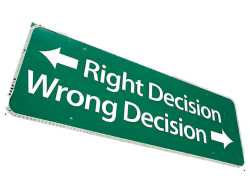
SEARCHES YOU NEED
Before you initiate a law suit of any kind, there are a number of factors you should consider:
- What could they sue you back for? This is called a defendant’s claim.
- Do you have a case and evidence to support it?
- Are you within the limitations period?
- Will the defendant file an assignment in bankruptcy?
- Do they have real property you can attach?
- Do they have personal property (assets) you can seize?
- What kinds of income, contracts or receivables do they have?
- What if you lose?
The links on your left will direct you to websites where you can determine in some cases who your debtor is, what your debtor owes and what they own. All of the above factors are important in determining whether you should abandon part of a claim to bring it into the small claims limit or, whether you should even sue in the first place.
DEFENDANT’S CLAIM
The defendant may file a defendant’s claim against you for two reasons. Firstly it may be a strategic maneuver to coerce you into discontinuing your claim. Secondly, the defendant may believe that you owe them money. If this is the case, the court will offset the defendant’s claim meaning subtract one judgment balance from the other to see what is left owing. As a plaintiff you need to ask yourself if you did everything you were supposed to do.
EVIDENCE
A civil claim is won or lost on the balance of probabilities. This is called the standard of proof. Essentially you need to prove your case 51% but if this is all you do, you will not likely win everything you sued for. You will also not likely be awarded pre-judgment interest or costs. To learn more about interest and costs go to the MORE ABOUT SMALL CLAIMS page. Evidence can come in the form of documents, objects and oral testimony from you or your witnesses. Documents, professional opinions, objects, photographs and witnesses all carry more weight than your personal oral testimony. You need evidence to win.
LIMITATIONS
The basic limitation period in Ontario is two years from when a reasonable person ought to have known that the cause of action has arisen. For a detailed analysis of your situation you need to look at the somewhat convoluted LIMITATIONS ACT. This Provincial Statute does not bind the Federal Crown or other provinces. There are other overriding acts like the Municipal Act which reduces your period for personal injury to a matter of days. For debts, there is acknowledgment which has the effect of re-starting the limitation clock. There are potential penalties for filing a claim outside the limitations period and at the same time, there are many things that extend limitations. A judgment in Ontario is good forever and is a way of extending time to collect if you feel the debtors situation may change. For a lay person this can be a lot to digest and likely requires legal advice.
BANKRUPTCY
Your judgment does not give you any priority whatsoever in the scheme of distribution from the Trustee’s estate. Unless you are a secured creditor, you will be number 13 at the bottom of the list with all the other unsecured creditors. The legal fees you spent to get money into the courts will be number 10 in the scheme. Judgments for fraud, breach of trust, fines, restitution orders, family responsibility and more survive bankruptcy. In many cases, you can initiate a claim after discharge of the bankrupt and the trustee, if your debtor committed an act of fraud or breach of trust. This can be very complicated for a lay person and again requires some legal advice.
ASSETS
Determining assets is critical in assessing the probability of bankruptcy. It is also a litmus test of the probability of collecting your judgment. The search tools on the left are useful for investigative purposes in searching out what is owed and owned. If your debtor has no identifiable assets or income/revenue, then it will be difficult to collect. Read more on the COLLECT A JUDGMENT page.
LOSING
The winner may or may not be awarded costs of up to 15% of the amount claimed. These costs may be for legal fees or any actual expenses for which the party has a receipt. If you are the plaintiff and you lose your claim, costs are the consequence. If you are the defendant and you lose, the judgment may appear on your credit file for six years after you pay (satisfy) the judgment including costs.